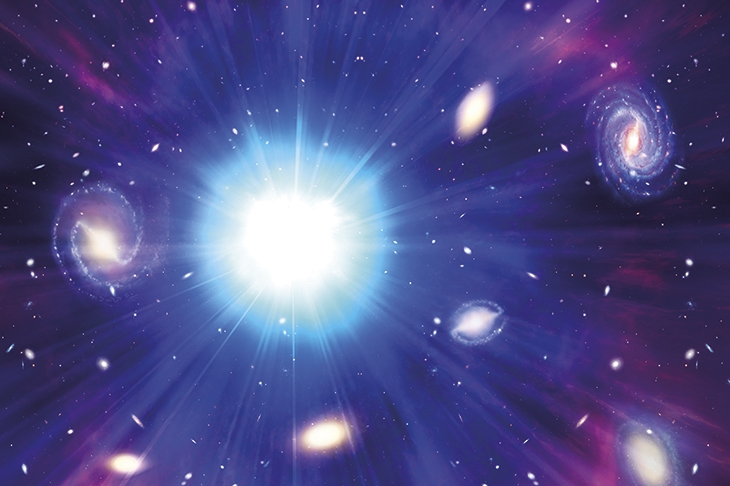The cosiest way to read The End of Everything, Katie Mack’s fast-paced book about universal death, is as a murder mystery. Everything in spacetime, including the reader’s understanding of much of the story, is in the shadows. Black holes, quarks and gluons, Cepheid variables, the Concordance Model? Mere words, strewn across the floor. Believability, restraint and common sense? Left at the door. In the middle of the carpet is our butchered universe. How did it die? Squashed (‘The Big Crunch’)? Boiled (‘Heat Death’)? Eviscerated (‘The Big Rip’)? Burst apart from every pore (‘Vacuum Decay’)? To one side, almost dancing with excitement, is Inspector Mack, a theoretical astro-physicist at Carolina State University.
‘If this is all deeply confusing and mind-boggling, that’s totally okay,’ she says. Murder mysteries are supposed to be confusing when everyone in the story dies, including the perp, and the crime scene decomposes by leaking into a different dimension (death by ‘ekpyrosis’). ‘BUT IT GETS EVEN STRANGER.’
Mack loves capitals — and exclamation marks. She’s a Twitter sensation. Her academic papers include ‘Bounds on extra dimensions from micro black holes in the context of the metastable Higgs vacuum’; her Twitter feed shows pictures of shaved alpacas that look like poodles and the latest gossip from asteroid Bennu (which might hit the Earth — a bonus mini-crime there) in about 150 years. She is alive! And brilliant, and my neighbour’s six-year-old daughter loves her. I love her.
The first question is, what took the murderer of our universe so long? The prime suspect in most end-of-everything scenarios is gravitation. Sometimes it’s the weakness of this force that’s the giveaway. Every time you lift up a cup of coffee you overcome the gravitational pull of an entire planet, Detective Mack points out. How can something that weak have muscled galaxies together? Some accomplice must have been at work.







Comments
Join the debate for just £1 a month
Be part of the conversation with other Spectator readers by getting your first three months for £3.
UNLOCK ACCESS Just £1 a monthAlready a subscriber? Log in